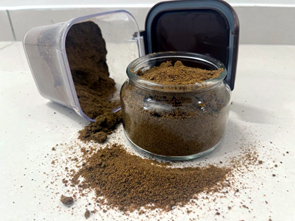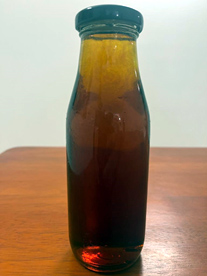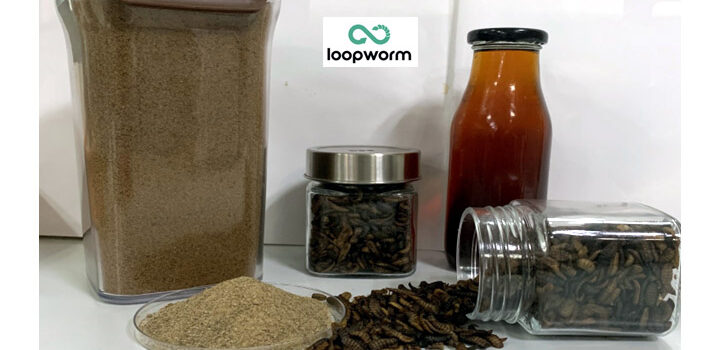Just like humans, chicken or birds in general require a balanced nutrition based on their life stage, gender, intended use (layer/ broiler/ breeder), species, and climatic conditions. Protein ingredients constitutes the second largest component in a compound poultry feed. Poultry birds are often fed with affordable & cheap sources of proteins, due to the pricing constraints.
 Soyabean meal (Defatted Soya protein concentrates) is the most widely used protein source in poultry diets. Apart from it, Fish meal, Meat & Bone Meal, and other oil seed cakes are also used. A few of these other ingredients face problems in terms of pricing, safety, or quality issues. Soyabean being a global commodity and a seasonal crop is heavily dependent on climatic conditions & geo-political situations. It involves the use of arable land & potable water; the same can be used to grow food crops directly for human consumption. But, questioning the sustainability of soybean-based ingredients for animal feed is not correct, unless there are alternatives to replace it completely or partially, considering the vast quantities of similar or better-quality ingredients needed at the right price point. Though veganism or vegetarianism is getting promoted, it is not stopping the growth of animal agriculture, especially poultry. Both chicken meat & egg consumption is increasing across the world. Hence, there is an upcoming need of an affordable alternative sustainable protein source.
Soyabean meal (Defatted Soya protein concentrates) is the most widely used protein source in poultry diets. Apart from it, Fish meal, Meat & Bone Meal, and other oil seed cakes are also used. A few of these other ingredients face problems in terms of pricing, safety, or quality issues. Soyabean being a global commodity and a seasonal crop is heavily dependent on climatic conditions & geo-political situations. It involves the use of arable land & potable water; the same can be used to grow food crops directly for human consumption. But, questioning the sustainability of soybean-based ingredients for animal feed is not correct, unless there are alternatives to replace it completely or partially, considering the vast quantities of similar or better-quality ingredients needed at the right price point. Though veganism or vegetarianism is getting promoted, it is not stopping the growth of animal agriculture, especially poultry. Both chicken meat & egg consumption is increasing across the world. Hence, there is an upcoming need of an affordable alternative sustainable protein source.
Around 197 million chickens are eaten across the world every day taking the tally close to 50 billion in a year. India stands at number fifth in the list of the top chicken consumption countries in the world.
To consider any alternative ingredient, there are some nutritional, technical and economical consideration to determines the competence of it.
The nutritional aspect which are appropriate are Essential amino acid balance, presence of naturally occurring Anti nutritional factors such as tannins and enzyme, presence of pathogens and need for supplementation. The technical aspect comprises of availability and supply throughout the year, bulkiness and wetness or powdery texture processing requirement, predicted availability of ingredients in long-term, consistency in research and development efforts. Last aspect is the economical aspect which means that the farmers may use on farm waste such as crop leftovers as input for insect production and add resulting fly’s larvae to feed their livestock.
However, insects are the natural food for chicken and provides optimum growth & immunity benefits.  Insect protein, thus is a suitable ingredient to consider as an alternative to Soybean Meal at least for partial replacement in compound feeds. Similarly, fats are required primarily to provide a dense source of energy to the poultry birds. It’s used more in Broiler feeds to increase the weight of birds. However, there is an alternative use of fats too. It acts as a palatability agent too. Chicken love insect like smell in their feeds, and hence Insect fats can play a crucial role not just as a macro-ingredient to replace plant-based oils, but also can act as a taste enhancer as a micro-ingredient.
Insect protein, thus is a suitable ingredient to consider as an alternative to Soybean Meal at least for partial replacement in compound feeds. Similarly, fats are required primarily to provide a dense source of energy to the poultry birds. It’s used more in Broiler feeds to increase the weight of birds. However, there is an alternative use of fats too. It acts as a palatability agent too. Chicken love insect like smell in their feeds, and hence Insect fats can play a crucial role not just as a macro-ingredient to replace plant-based oils, but also can act as a taste enhancer as a micro-ingredient.
Most insects feed on organic rejects or food by-products, hence a model can also get established where mini-insect farms are integrated with poultry farms. This would result in dual benefit of food waste management & result in lower costs of feed. Insects are also resilient and require lesser space, water & electricity to grow at a small scale. Another model could be that professional insect farming or processing companies produce and supply these ingredients directly to compound feed manufacturers. Another aspect is promoting designer eggs with price premium capturing ‘Insect fed Eggs or Insect fed Poultry meat’.
Depending on the type of insects fed to layer birds, the eggs can have brown shells instead or white, darker yolk colour, more Omega 3 fatty acids, thicker shells reducing breakage waste, Calcium richness, etc. More research needs to be done to match the right quantities of insect-based ingredients to get desired results. Similarly, insects fed to commercial caged broilers can lead to lesser stress &  ultimately lesser farm mortality, better pecking behaviour, and more immunity. Moreover, with the correct use of insect-based ingredients, better Feed Conversion Ratio (FCR) & Egg productivity can be achieved.
ultimately lesser farm mortality, better pecking behaviour, and more immunity. Moreover, with the correct use of insect-based ingredients, better Feed Conversion Ratio (FCR) & Egg productivity can be achieved.
More research needs to be done both at lab & farm levels to prove the efficacy of insect-based ingredients. Feed manufacturers should be cognizant to the fact that it’s not a complete feed, but an ingredient. Hence, it is not to be used as a complete food or protein or fat source. Determining the right inclusion levels is the key to make the best use of insects in Poultry. Also, with the change in insect type, the nutritional value also changes. This should also be factored in while analysing or testing different ingredients. Insects fed with food waste or by-products experience a change in their nutritional value due to the change in food waste. Hence, though the insect species could be same of different vendors, but the waste they use to cultivate these insects can lead to a change in quality. This is often overlooked and can lead to inconsistent results. It’s imperative that with the collaborative efforts from insect farmers, processors, poultry farmers, feed manufacturers and animal nutritionists, insects can become a mainstream ingredient in the Poultry industry, benefitting all the stakeholders.
The livestock numbers are expected to get doubled by 2050. But the feed crops might not get doubled in the same time period, hence it’s the need of the hour to look into other ingredients like insects which can bridge this supply demand gap in the future. Insects being a dense source of proteins & fats offer a viable sustainable option to conventional ingredients, and can lead to a more sustainable animal agriculture system, ultimately securing the future of food & feed.
Author: Mr. Ankit Alok Bagaria, Co-Founder of Loopworm






